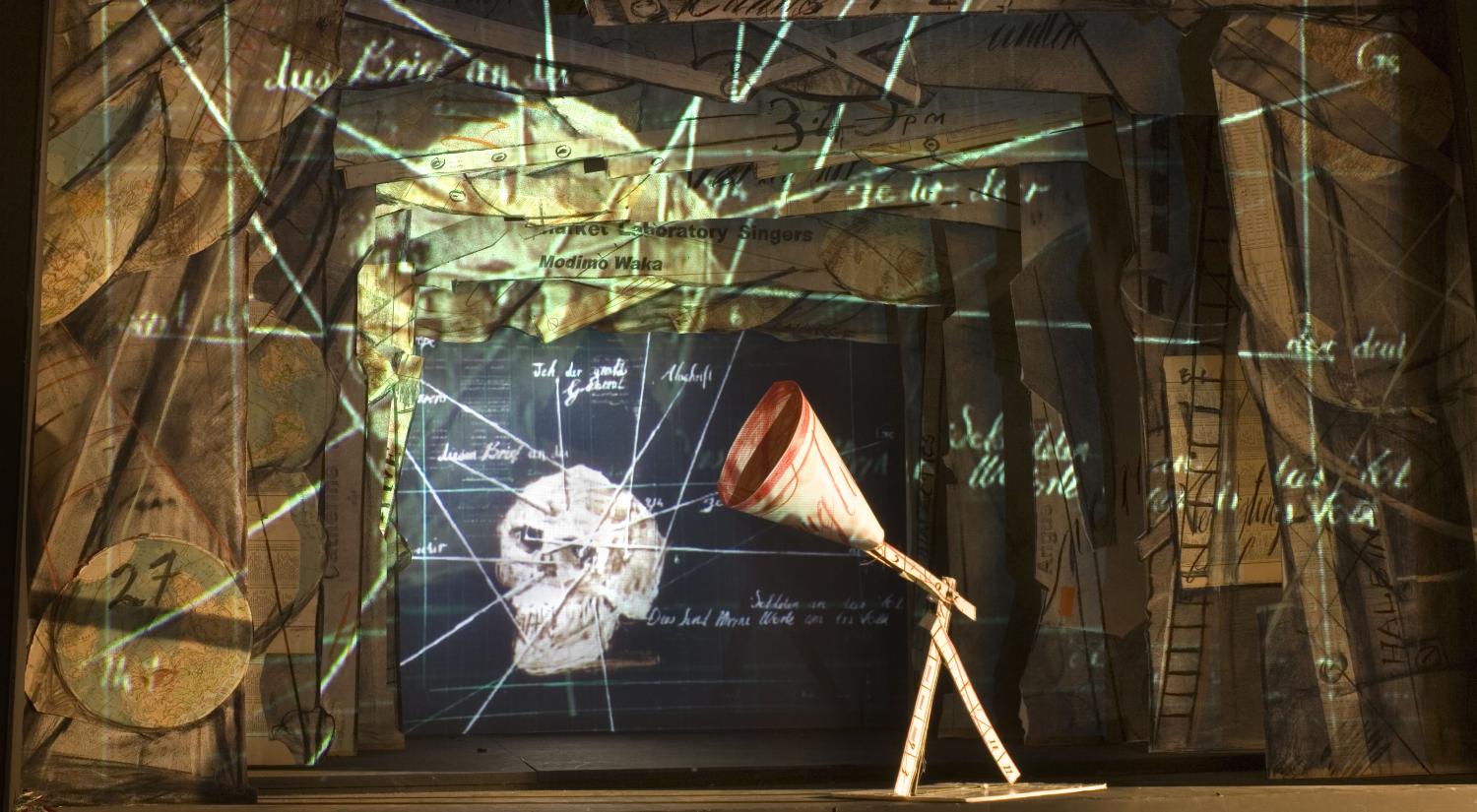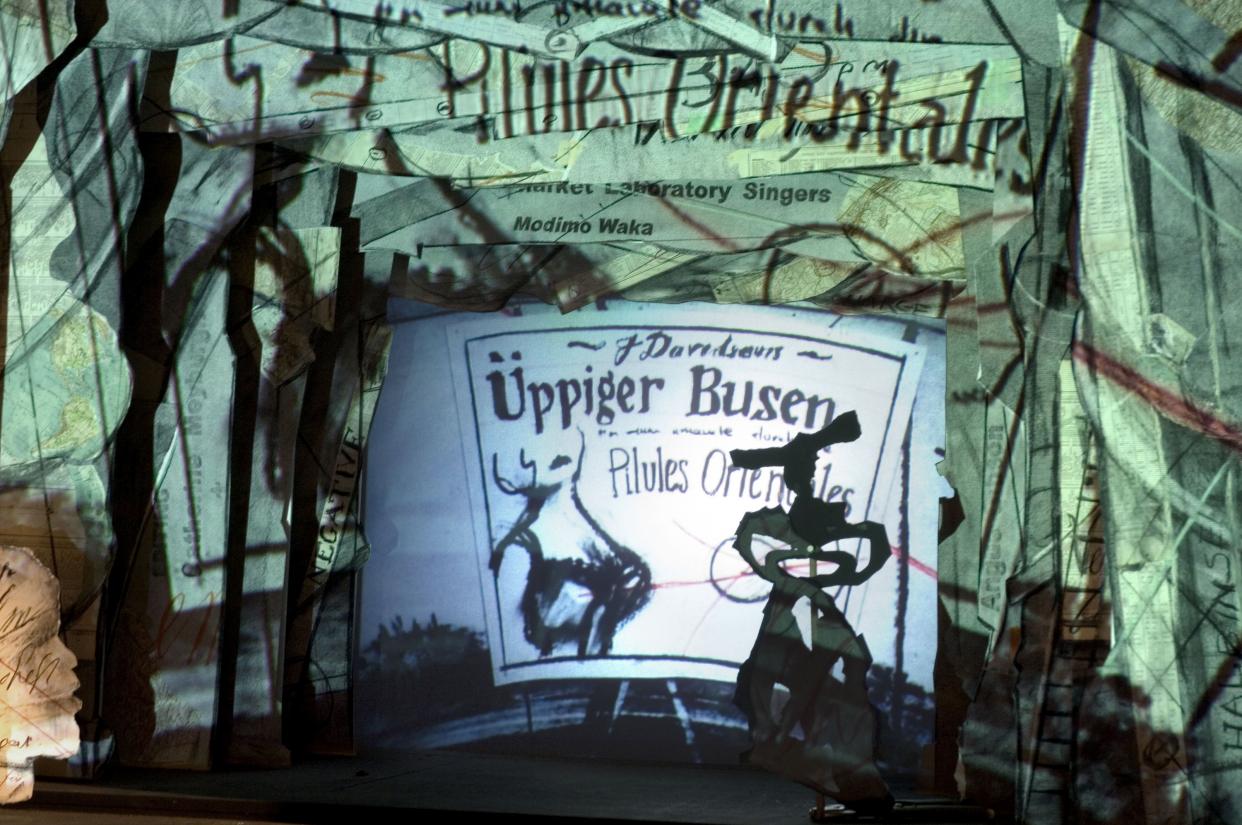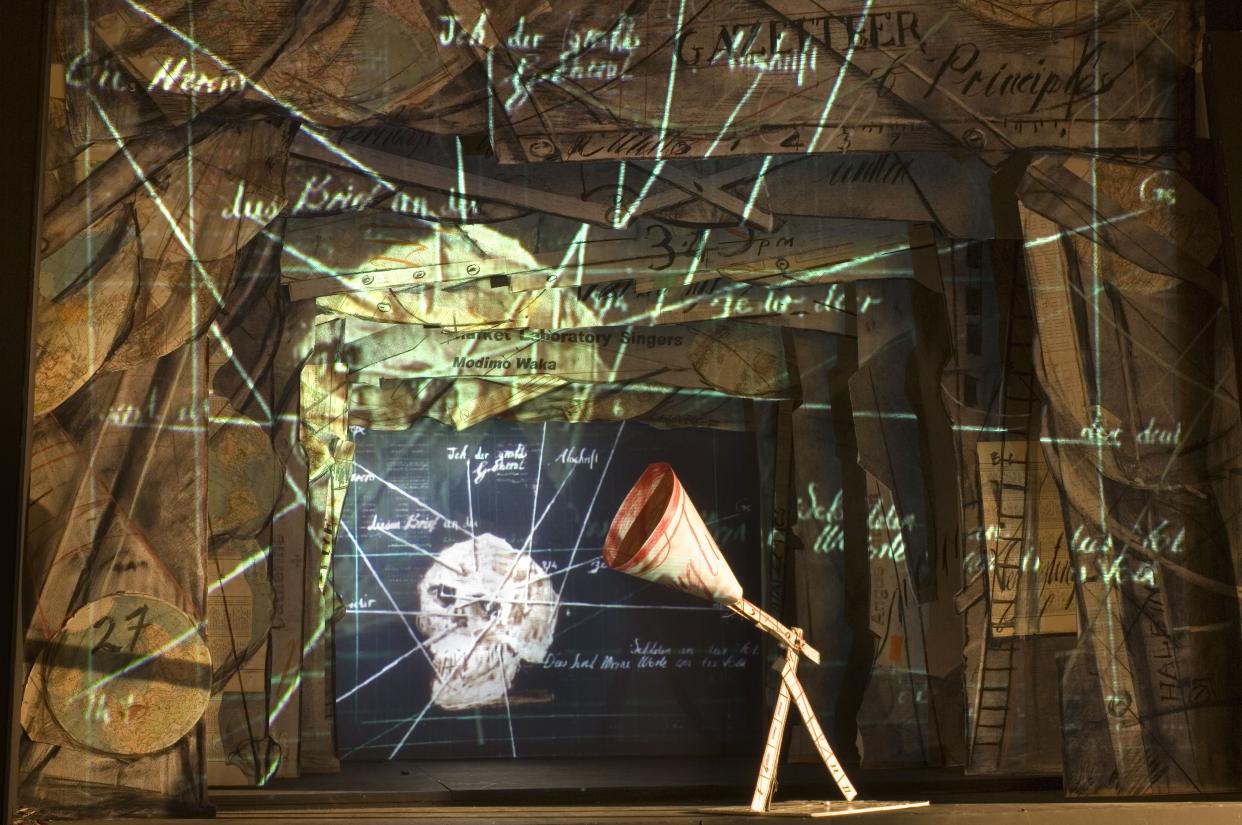Black Box / Chambre Noire (2005) by the South African artist William Kentridge marks a significant shift in the artist’s oeuvre. The work consists of film, kinetic objects, drawings and a mechanical miniature theatre and represents the growing fusion of Kentridge’s interest in theatre, opera and art that still influences the artist’s production today. Black Box / Chambre Noire is therefore considered one of his principal works, and with support from the New Carlsberg Foundation it is now part of the permanent collection of the Louisiana Museum of Modern Art, which is situated north of Copenhagen.
A processual work
The rich and multi-layered character of the work stems from the artist’s particular working process, where drawings, archive photos and film clips from the German colonial era are interwoven with his own footage from South West Africa (now Namibia). This reuse of materials results in a processual work that contains traces of the past. Black Box / Chambre Noire thus manifests its own inescapable history, and the many layers of meaning are laid bare to the viewer.
Recollection and grief
As is often the case in Kentridge’s work, recollection plays a key role in this piece. Black Box / Chambre Noire examines how subjective memories are shaped by history’s grand narratives. Kentridge explores the German colonial presence in Africa, in particular the German massacre of the Herero tribe in South West Africa in 1904, an incident that many regard as the first genocide of the 20th century. In addressing this historic event Kentridge draws on Freud’s concept of Trauerarbeit (grief work), which Freud views as the natural psychological mechanism for dealing with trauma and painful loss. Black Box / Chambre Noire explores the difficulties associated with representing historical traumas and reconstructing historical events through the lens of a particular time, place and political context. The work thus addresses seemingly simple historical constructs such as past and present, victim and perpetrator, theatre and audience.
About the artist
William Kentridge was born in 1955 in Johannesburg, where he still lives and works today. Kentridge has exhibited around the world and is represented in the collections of some of the world’s leading museums, including the Metropolitan Museum of Art (New York), San Francisco Museum of Modern Art, Honolulu Museum of Art, Tate Modern (London), Museum of Contemporary Art (Chicago) and Museum of Modern Art (New York). Louisiana presented the first major solo exhibition of Kentridge’s work in Scandinavia in 2017.





